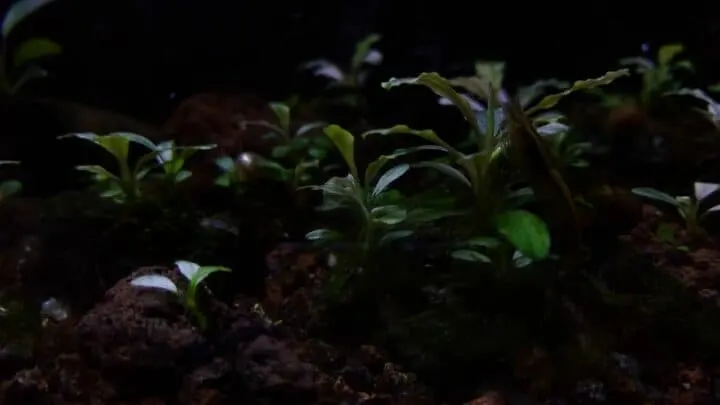If you have been an aquarium buff for a long time, you will know that different aquarium plants require different lighting. Some plants need more light, while others do well even in low light.
The latter makes the maintenance process considerably easier, as you can place your water tank wherever you like.
The plants listed in this article need low light, have a manageable care guide, and are easy on the pocket.
Few may require carbon dioxide supplementation; however, most absorb it from their surroundings.
Table of Contents
Easy Low Light Aquarium Plants
The low-light aquarium plants that you can grow with the least effort and in low light include Anubias, Amazon Sword, Java Moss, Java Fern, Crypts, Marimo Ball, Water Wisteria, Dwarf Sagittaria, and Dwarf Rotala.
Anubias
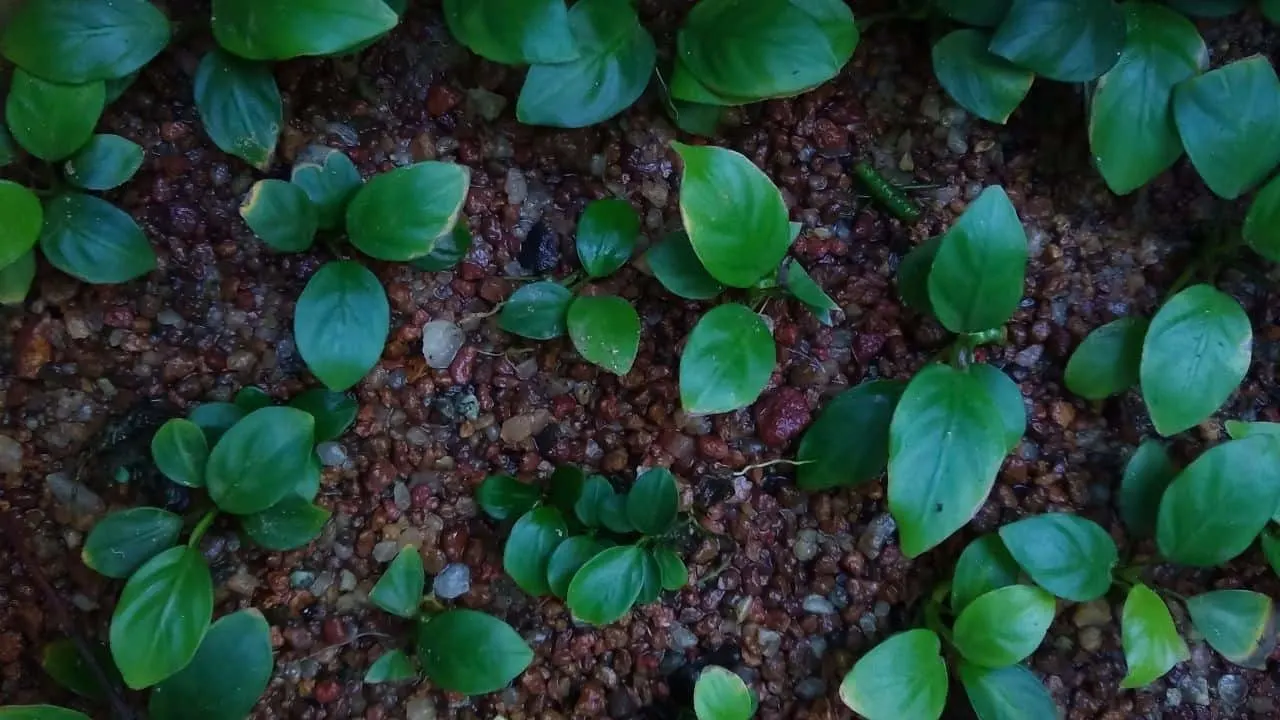
The list of low-light aquarium plants is not complete without mentioning Anubias plants, including Anubias Barteri and Anubias Nana.
This plant remains a staple in many low-tech water tanks because of its highly accommodating characteristics, such as optimal growth even in unfavorable conditions and good tolerance of high and low temperatures.
This plant will flourish even with minimal attention.
The Anubias are naturally cultivated in various cities of West Africa. They typically have broad, rounded leaves and grow best attached to rocks or driftwoods.
The plant dislikes harsh sunlight; therefore, keeping it in low-light is the best choice.
If you are growing the Anubias alongside plants that prefer high sunlight, cover the Anubias with lots of shade to prevent wilting.
The Anubias have sturdy leaves that keep them sufficiently hydrated and protect them from trivial damage.
To add a natural and vibrant look to your aquarium, plant this beauty right away.
- Scientific name: Anubias Sp
- Common name: Anubias
- Light requirements: low light
- Nutrition: low
- Growth rate: slow to moderate
- Care: easy
- Carbon dioxide supplements: optional
Amazon Sword
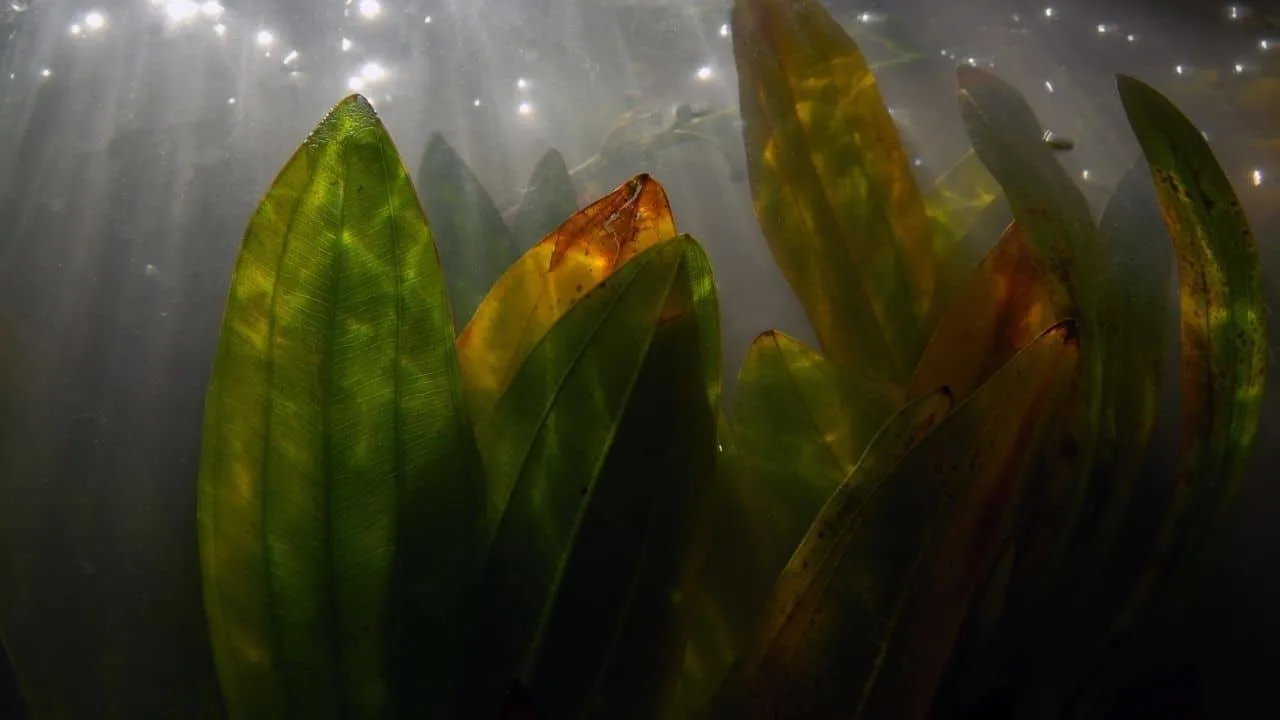
Next comes the Amazon Sword plant, a true beauty scientifically known as Echinodorus sp.
This plant is pretty big and rightly fills background space. It attains a height of about 20 inches (50 cm) when fully mature and may cover nearby plants.
The Amazon Sword plant’s leaves come in several sizes and shapes.
The most popular varieties include Bleheri and Amazonicus. They need ample feed to support their large size.
Remember only to grow them in large aquariums because they do not grow properly unless they have adequate space.
While most Amazon Sword species do well in low-light, others may do better under 10 to 12 hours of medium to high light.
Moreover, given their slow growth rate and high nutrient demand, they may support algae growth if left unchecked.
- Scientific name: Echinodorus sp.
- Common name: Amazon Sword plant
- Light requirements: low to moderate
- Nutrition: low
- Growth rate: moderate
- Care: easy
- Carbon dioxide supplementation: optional
Java Moss

Java Moss or Taxiphyllum Barbieri, is another excellent addition to your aquarium plant collection. This hardy moss attaches to rocks or woods when growing and thrives both above and underwater.
Since Java Moss gives the plants a natural look, it has gained popularity among aquatic plant owners.
Apart from water tanks, it is also used in terrariums and paludariums. Apart from low light, it needs plenty of moisture and moderate feeding.
The trick to growing the healthiest Java Moss is to place a tight lid over the tank to lock in the moisture; this creates a favorable humid setting for the moss to grow in.
Moreover, its fine, stringy fronds contain an edible biofilm, great for the environment, and offer good cover.
A top favorite of fish and shrimp, it acts as a great hiding space in large aquatic communities or breeding tanks.
However, one thing to note here is that it should be cleaned carefully; failure to do so results in the browning or death of its fronds.
Lastly, you may also need to trim it from time to time to keep it fresh and healthy.
- Scientific name: Taxiphyllum Barbieri
- Common name: Java Moss
- Light requirements: low
- Nutrition: low
- Growth rate: moderate to high
- Care: moderate
- Carbon dioxide supplementation: optional
Java Fern
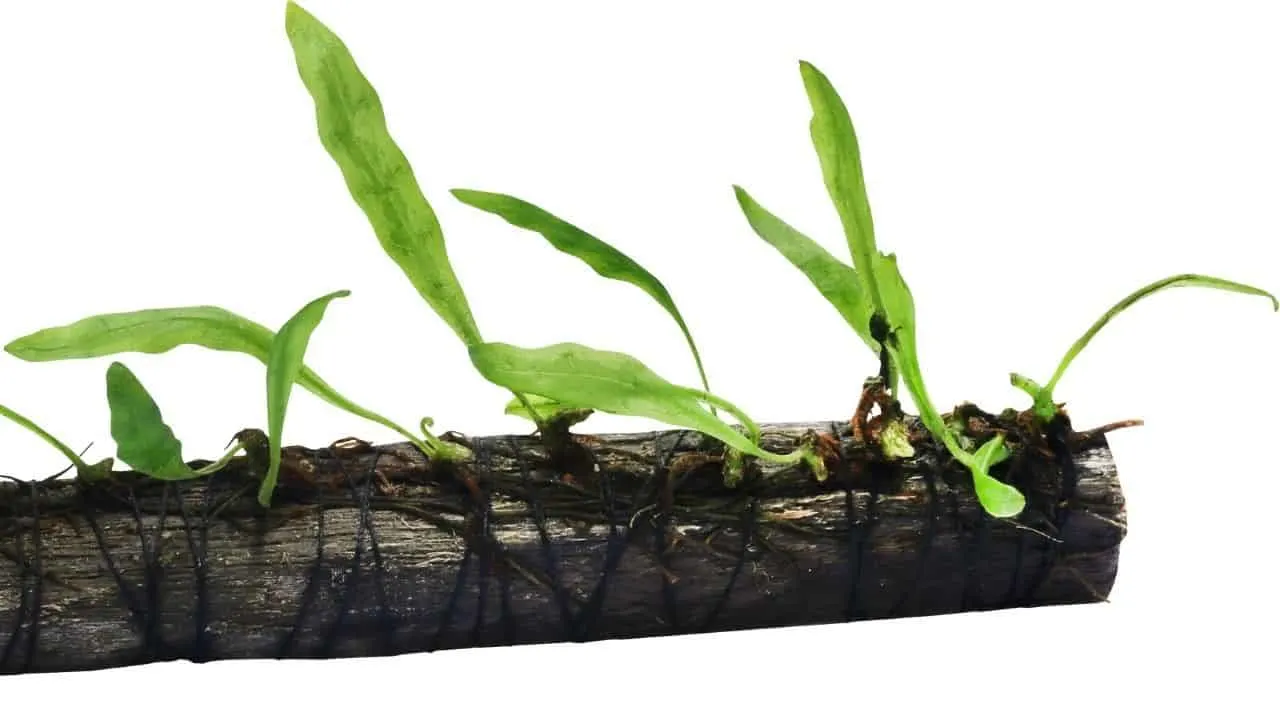
Another wonderful plant is the Java Fern, known as Microsorum Pteropus in the botanical world.
It is loved by beginners and experienced alike due to its owner-friendly and accommodating nature. Just like Anubias, Java Fern thrives fully only when supported by rocks or driftwood.
Java Fern has elongated, sharp leaves that are good for filling spaces and backgrounds, especially in new aquariums.
If you turn the leaves upside down, you will notice rows of round, brown or black spores, often mistaken for algae.
These spores are simply an identifying feature of all ferns and may be used for replanting the species for a greener aquarium look.
The only setback is that with Java Fern, you may have to deal with algae more often.
However, keeping the plant and the aquarium clean helps lower the chances of algae significantly.
- Scientific name: Microsorum Pteropus
- Common name: Java Fern
- Light requirements: low
- Nutrition: low
- Growth rate: low
- Care: easy
- Carbon dioxide supplementation: optional
Crypts
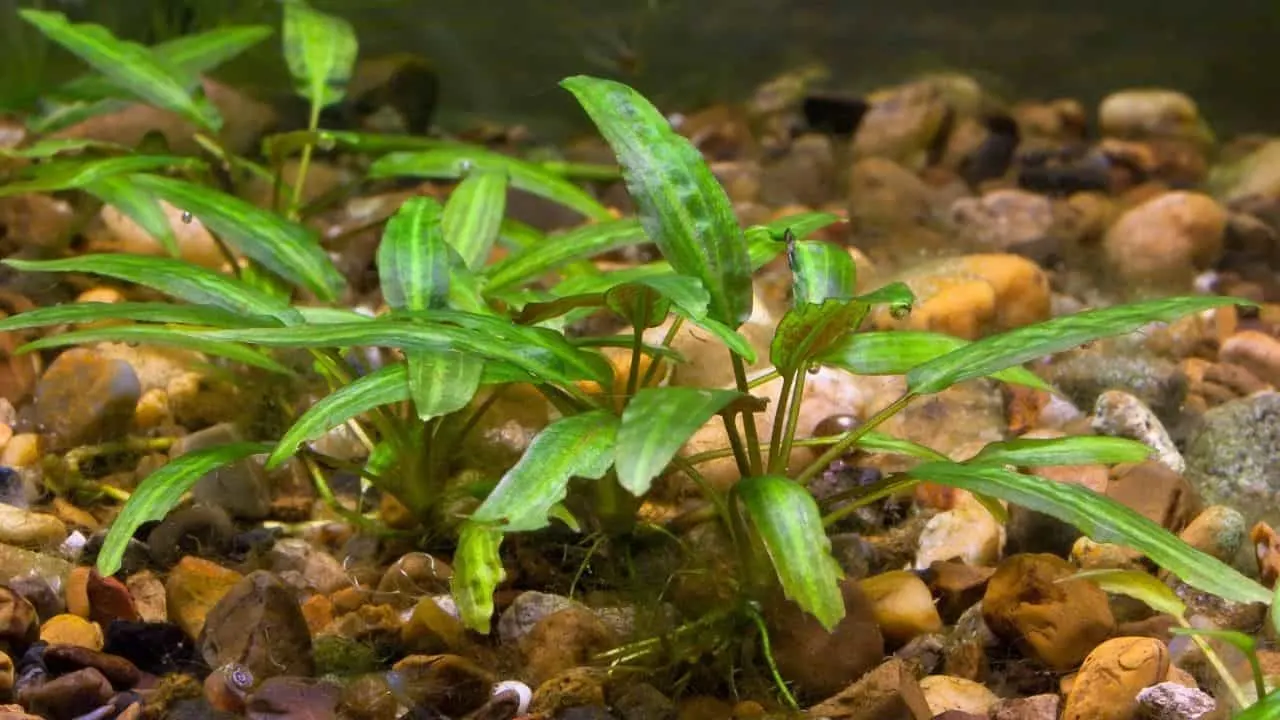
Also called Cryptocoryne Wendtii, Crypts are an excellent choice for filling aquarium floors. There are many Crypt varieties, all varying in shapes and sizes.
Some are suitable for nano aquariums, while others grow best in large water tanks.
Another type is the Cryptocoryne Flamingo; a bright species colored a spectacular pink.
However, if you would rather keep the aquarium’s theme green, a lot of various green-colored Crypts are also available.
One thing to keep in mind here is that Crypts are pretty finicky during the acclimation process. Some varieties may suffer from discoloration, while others lose some leaves.
However, do not worry since it is normal (crypt melting). It may lose a few leaves after the initial planting days, but things go smoothly once it settles.
Cryptocoryne Wendtii is a good option for small aquariums since it only attains a height of about 6 inches (17.5 cm) when fully mature.
Furthermore, Cryptocoryne Wendtii is available in brown, green, and red, so choose the color that goes best with your aquarium’s theme.
- Scientific name: Cryptocoryne Wendtii
- Common name: Crypts
- Light requirements: low
- Nutrition: low
- Growth rate: slow
- Care: east
- Carbon dioxide supplementation: optional
Marimo Ball
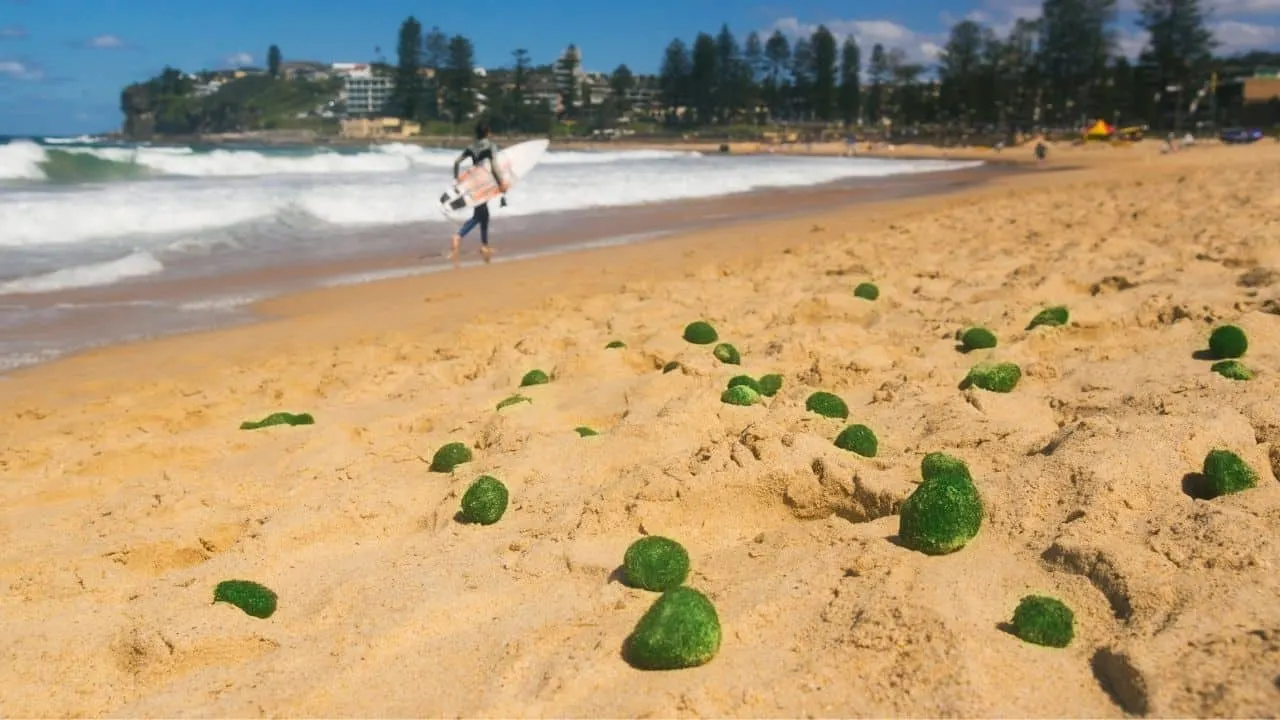
The Aegagropila Linnaei, commonly known as Marimo Ball, is algae that you need in your aquarium.
Marimo balls consist of a special type of beneficial algae called Aegagropila Linnaei, which grows in a circular shape in the correct surroundings.
Requiring little care, the plants thrive in many parameters. You need to rotate them every now and then to help them maintain their round shape and good aeration.
An interesting fact about these plants is that in Hokkaido, Japan, a festival is arranged every year to create awareness about Marimo Ball’s conservation.
Unfortunately, their number is decreasing as they are progressively disappearing from Lake Akan, their natural habitat.
- Scientific name: Aegagropila Linnaei
- Common name: Marimo Ball
- Light requirements: low
- Nutrition: low
- Growth rate: low to moderate
- Care: easy
- Carbon dioxide supplementation: optional
Water Wisteria
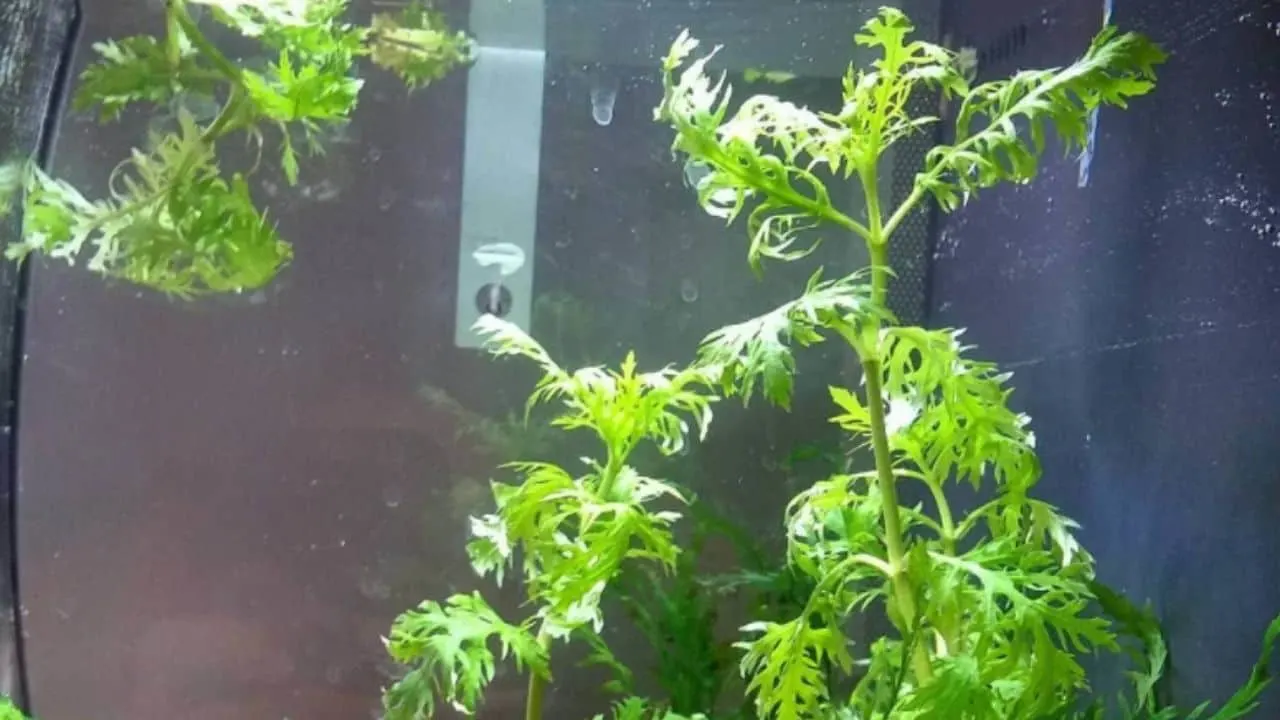
Photo Credit: @prairiewitch on Instagram!
For those who are fans of tall, feathery plants, Water Wisteria is a good choice.
Botanically known as Hygrophila Difformis, this is a stem plant that acts as an excellent cover for shy shrimp and fish.
Apart from keeping an eye on the plant’s growth rate, it requires minimal care.
The Water Wisteria has a somewhat fast growth rate, and thus, it may cover the close-by plants, blocking their light.
To prevent this, trim it occasionally to look healthy and fresh apart from staying within its designated space.
Water Wisteria does well in low light; however, it also performs exceptionally well under medium to high light levels.
Good thing you can partly control its growth. Simply expose it to low light if you want to keep its leaves small and fine, or place it in high light for a larger, more untamed look.
- Scientific name: Hygrophila Difformis
- Common name: Water Wisteria
- Light requirements: low
- Nutrition: low
- Growth rate: slow
- Care: easy
- Carbon dioxide supplementation: optional
Dwarf Sagittaria
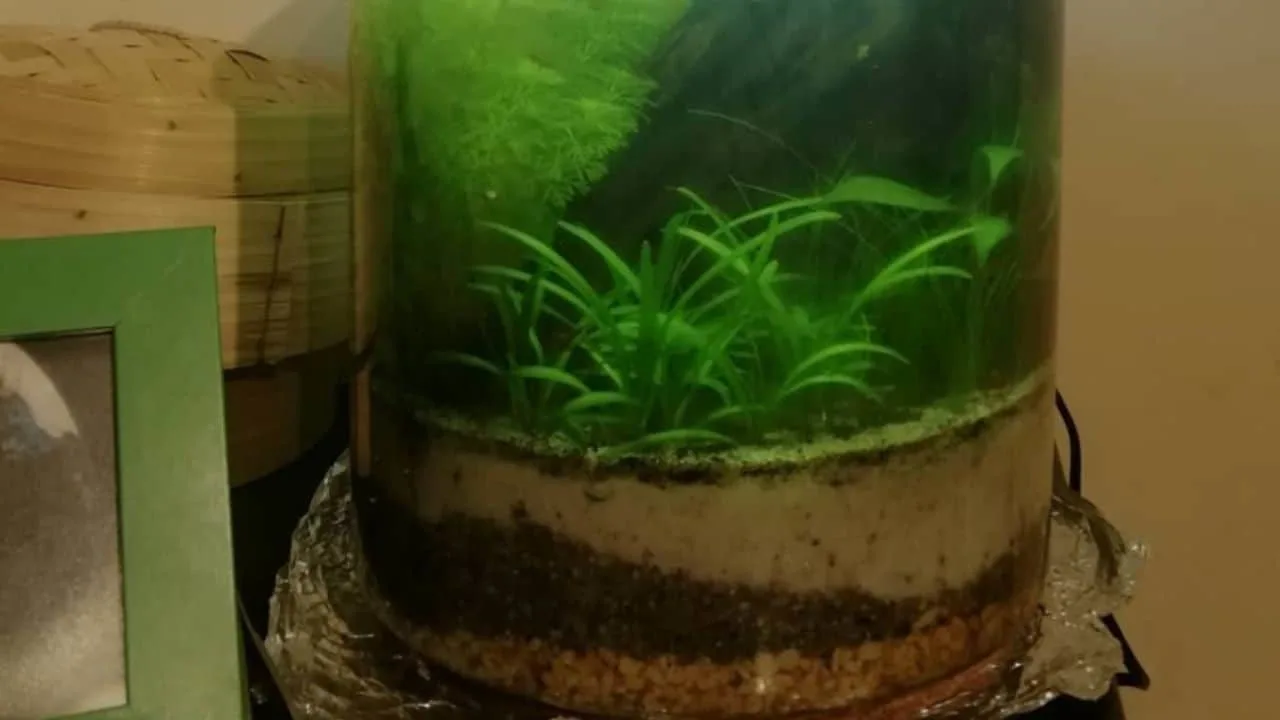
Photo Credit: @delerio88 on Instagram!
Next up, we have the Dwarf Sagittaria, scientifically known as Sagittaria Subulata. This works as an excellent carpeting plant, allowing almost all plant and fish types to flourish.
It is a grass-like foreground plant with a fairly fast growth rate and is ideal for growing in new aquariums.
When grown as a regular plant, it may reach a height of about 12 inches (30 cm), making things slightly tough for the surrounding plants.
But when growing like a carpet plant, it grows much lower, close to the ground.
For the best results, prune the Dwarf Sagittaria plants every now and then. Alternatively, you can snip the leaves with a pair of pruning scissors.
- Scientific name: Sagittaria Subulata
- Common name: Dwarf Sagittaria
- Light requirements: low
- Nutrition: low
- Growth rate: slow to moderate
- Care: easy
- Carbon dioxide supplementation: optional
Dwarf Rotala
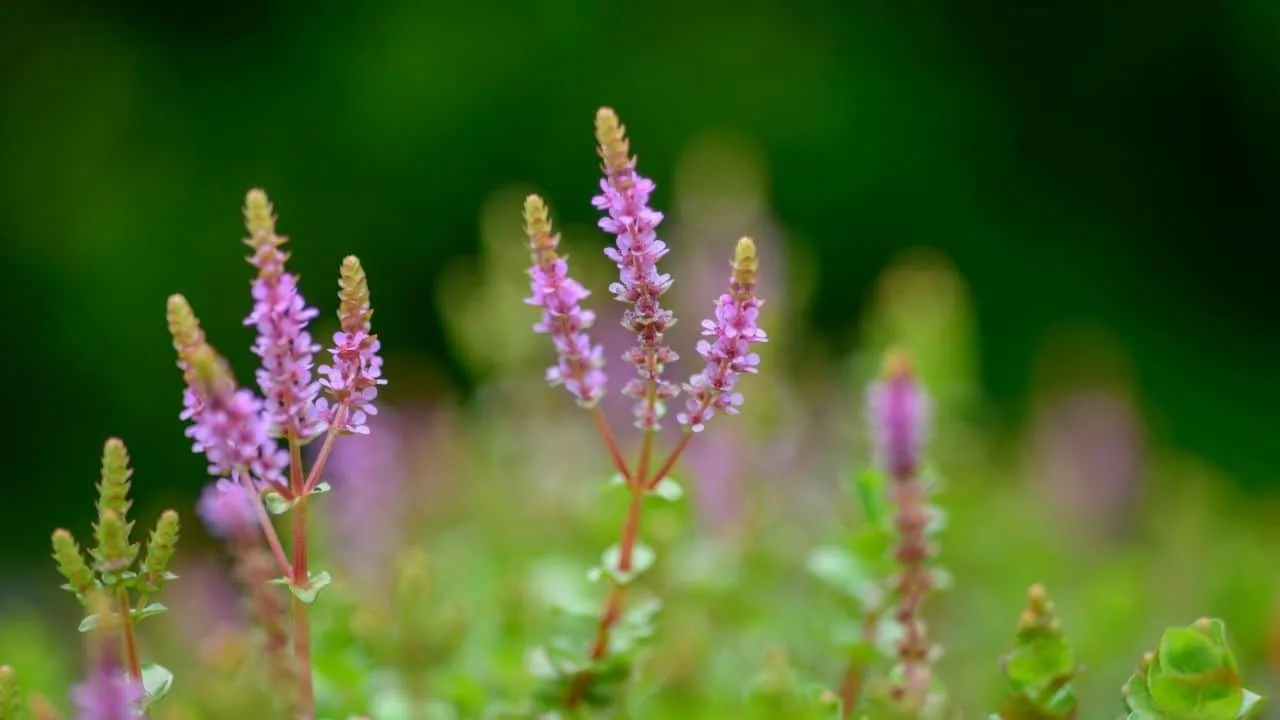
Dwarf Rotala, or Rotala Rotundifolia, is another good low-light aquatic plant. If you want to add some color to your aquarium, especially red, this is the plant for you.
Rotala Rotundifolia, unlike other family members, can grow reasonably well in low light. However, to develop the most intense red color possible, it has to be placed in moderate to medium light.
A stem plant with fine leaves, Rotala Rotundifolia’s famous for its lush, sophisticated look. When grown immersed, it forms bright, round green leaves.
In contrast, submersed plants give rise to sharp, narrow red leaves.
The plant may grow shoots from the sides; thus, periodic pruning is recommended.
Furthermore, keep an eye on the Rotala Rotundifolia’s bottom area since it may shed leaves from there, giving the plant a bare look.
- Scientific name: Rotala Rotundifolia
- Common name: Dwarf Rotala
- Light requirements: low
- Nutrition: low
- Growth rate: low to moderate
- Care: easy
- Carbon dioxide supplementation: optional
How Much Light Low Light Aquarium Plants Need
Several aquarium keepers believe that the stronger the light, the faster the plant grows. This may be true for some plants, but most aquatic plant species do better in low to moderate light.
There is no doubt that light plays a major role in any plant’s development, along with carbon dioxide levels and nutrients; however, too much of it can cause problems.
Considering this, how much light is actually low light? Low light is the amount needed for plants to perform their vital functions, such as photosynthesis.
This light is not high enough to burn the leaves or cause leaf-burning, but only enough for the plants to retain their characteristic color.
Some aquarium keepers have also grown their plants under stock fluorescent lights; however, this may be too low for adequate growth.
The main purpose of these lights is decoration and to view fish. These fluorescent lights mostly do not support essential photosynthetic functions.
- Most plant species do better in low to moderate light.
- Nutrition and carbon dioxide levels play important roles in development.
- The low light does not burn the leaves but is enough for the plants to retain their characteristic color.
- Use stock fluorescent lights only if your plant and fish are compatible with them.
Can Low Light Aquatic Plants Survive Under Natural Sunlight
Theoretically, low light plants should be fine when exposed to natural sunlight, despite a few cloudy or rainy days.
However, the problem here is that natural sunlight is too much for the small ecosystem within the aquarium.
Any slight fluctuations are less likely to be corrected by themselves since natural light either provides the plants with too much or too little light.
If your water tank is in excessive light, you will have to deal with potentially damaging agents, such as algae, which depletes other plants’ nutrients.
The fish may also suffer due to incorrect pH, oxygen and carbon dioxide levels.
On the other hand, if the fish aquarium is in insufficient light, they will either grow erratically or not at all.
The tank’s temperature may also begin to rise, resulting in widespread plant wilting and the death of the aquatic creatures.
Therefore, small, modifiable, and artificial lights mostly work better for low-light aquarium plants.
The best way to decide the type and amount of light is to research before investing in any plants or fish.
Once you are sure your plants and fish are compatible with low light levels, only then decide where to place your aquarium.
- Natural sunlight may be too little or too much for aquatic plants.
- Excessive light causes problems, such as algae, which depletes the nutrients of other plants.
- Low light leads to issues, including erratic growth and stunted development.
- Small, modifiable, and artificial lights mostly work excellently.
- Only use low light if your fish and plants are compatible with it.
Conclusion
To establish a healthy ecosystem within an aquarium, all you need is water filters, fish, and some good-quality plants compatible with one another.
Ensure that all the aquatic creatures are getting their fair share of nutrients and light, and you will have each of them thriving at their best.

Daniel has been a plant enthusiast for over 20 years. He owns hundreds of houseplants and prepares for the chili growing seasons yearly with great anticipation. His favorite plants are plant species in the Araceae family, such as Monstera, Philodendron, and Anthurium. He also loves gardening and is growing hot peppers, tomatoes, and many more vegetables.

